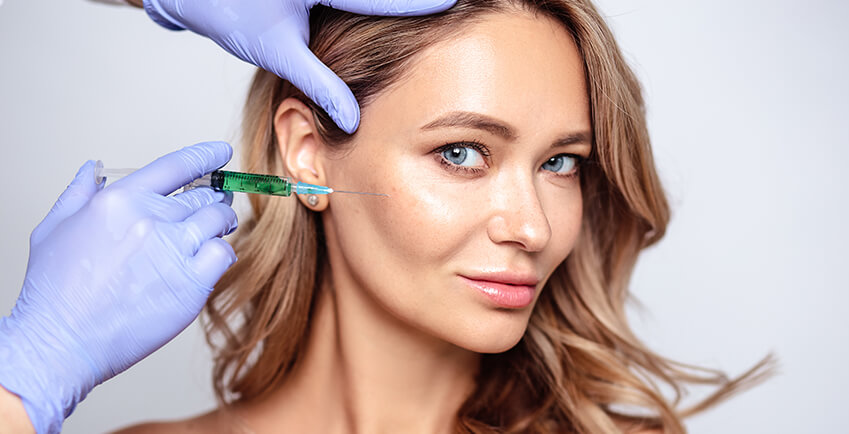Over the past decade, dermal fillers have become one of the most requested aesthetic procedures worldwide. From refreshing tired under-eyes to defining lips and restoring facial contours, fillers offer a minimally invasive way to look rejuvenated without surgery. But despite their popularity, one question continues to surface: how safe are fillers?
The excitement around fillers is understandable—they provide instant results, little downtime, and can be tailored to individual needs. Yet, while the outcomes are often impressive, fillers are medical treatments, not quick beauty fixes. To make an informed decision, it’s important to balance the benefits with a clear understanding of potential risks. Whether you are wondering how safe under-eye fillers are, how safe lip fillers may be, if hyaluronic acid fillers are the safest option, or simply asking “are fillers bad for you?”, the answers lie in both the science and the practice behind these treatments.
What Are Dermal Fillers?
Dermal fillers are injectable substances used to replace lost volume, smooth wrinkles, or enhance features. The most widely used fillers today are based on hyaluronic acid (HA), a sugar molecule naturally found in the skin that binds water and keeps tissues plump and hydrated.
Other types of fillers include:
- Calcium hydroxylapatite, a mineral-like compound used for deeper lines.
• Poly-L-lactic acid, which stimulates collagen over time.
• Polymethylmethacrylate (PMMA), a semi-permanent filler used less frequently due to higher risks.
HA fillers dominate the field because they are biocompatible, temporary, and reversible, making them the safest option for most patients.
Why Are Fillers So Popular?
The rise of fillers reflects more than cosmetic desire—it shows a broader shift toward non-surgical enhancements. Unlike facelifts, fillers require no incisions or long recovery periods. Most people can resume daily activities immediately after treatment, with only mild swelling or bruising.
Their appeal lies in:
• Immediate, customizable results
• Minimal downtime compared to surgery
• Versatility in treating areas like lips, cheeks, jawline, and under-eyes
• A built-in safety net with HA fillers, since they can be dissolved with hyaluronidase if needed
These qualities explain why fillers have become a staple in aesthetic medicine. But as accessibility increases, so does the importance of safe practices.
How Safe Are Hyaluronic Acid Fillers?
Among all filler options, hyaluronic acid fillers are considered the safest. Because HA is a substance the body naturally produces, allergic reactions are uncommon. The greatest advantage is reversibility—if complications occur or results are unsatisfactory, the filler can be dissolved within hours.
That said, safety is not automatic. It depends on:
• The injector’s anatomical knowledge and skill
• Correct injection techniques
• Maintaining sterile procedure
• Use of genuine, approved filler products
When all of these conditions are met, hyaluronic acid fillers are safe and predictable, which is why they are the preferred choice for most patients and doctors alike.
How Safe Are Under-Eye Fillers?
The under-eye region is one of the most delicate areas to treat with fillers. Patients often seek treatment here to reduce hollowness or the shadowed look that creates a tired appearance. So, are under-eye fillers safe? Yes, but they must be performed with extreme precision. The skin here is thin, the fat pad is limited, and the blood vessels are significant, which means there is very little margin for error.
Risks include swelling, visible lumps if the filler is placed incorrectly, bruising, or in rare instances, vascular complications. To minimize these, experienced injectors typically:
• Choose a suitable filler type and volume
• Use cannulas or fine needles to reduce trauma
• Place filler in the correct plane to avoid irregularities
When performed by a skilled professional, under-eye fillers can produce subtle, natural improvements with very little downtime.
How Safe Are Lip Fillers?
Lip fillers remain one of the most popular cosmetic requests, known for adding youthful definition or subtle plumpness. In qualified hands, they are very safe. Hyaluronic acid fillers integrate smoothly into the lips, providing natural-looking enhancement.Possible side effects include mild swelling, temporary tenderness, or minor asymmetry. Rarely, vascular occlusion can occur. The key is moderation—overfilled lips can appear unnatural, which is why technique and balance matter more than sheer volume.A trained injector will work with your facial proportions to ensure results that complement, rather than overpower, your natural features.
Are Fillers Bad for You?
Many people worry that fillers might be “bad” for their health. The reality is that fillers themselves are not harmful when used correctly. Hyaluronic acid fillers, in particular, are biocompatible and temporary—the body naturally metabolizes them over time.
Problems arise mainly when:
• Fillers are overused without proper judgment
• Unqualified injectors perform the procedure
• Permanent or unregulated products are used
• Patients ignore aftercare instructions
So, the answer is clear: fillers are not bad for you, but unsafe practices can be.
Possible Risks and Complications
As with any medical treatment, fillers carry potential risks. These range from mild to rare but serious:
• Common side effects: swelling, bruising, redness, tenderness
• Aesthetic concerns: asymmetry, lumps, or overfilling
• Medical complications: vascular occlusion, infections, granulomas, or delayed inflammatory responses
• Rare events: tissue damage or vision loss if filler enters a blood vessel
Why the Injector Matters Most?
The most important determinant of filler safety is the practitioner. A qualified injector brings not only technical skill but also a deep understanding of anatomy and the ability to manage complications should they occur.
The rise of budget clinics and non-medical providers has unfortunately contributed to avoidable complications. Patients should feel empowered to ask:
- What filler will be used, and is it approved?
- How experienced is the injector with this area?
- What steps are in place if a complication arises?
A responsible practitioner welcomes these questions and prioritizes safety above all.
The Patient’s Role in Safety
Patients also play a role in ensuring safe outcomes. To reduce risks:
- Share your full medical history and any prior filler treatments.
- Confirm that only authentic, approved products are used.
- Follow aftercare guidelines—such as avoiding strenuous activity, alcohol, or heat in the first 24–48 hours.
- Keep your expectations realistic—aim for natural enhancement rather than dramatic change.
FINAL THOUGHTS
So, how safe are fillers in reality? The answer is encouraging: when performed responsibly, fillers are very safe. Most patients experience only minor, temporary side effects and enjoy natural, confidence-boosting results.
The bigger truth is that fillers are medical treatments and should be approached with respect, not treated as casual beauty fixes. The safest outcomes happen when three elements come together: a qualified practitioner, authentic products, and an informed patient.
In the end, asking “are fillers bad for you?” misses the real point. Fillers are simply tools—neither inherently good nor bad. In expert hands, they can rejuvenate, restore, and enhance. In the wrong hands, they can create complications that overshadow their benefits.
Whether you’re curious about how safe under-eye fillers are, wondering how safe lip fillers might be, or simply debating is getting filler safe, the best answer is this: fillers are safe when done by qualified professionals, with approved products, in the right setting.
They remain one of the most effective and trusted ways to refresh and rejuvenate the face—safely, naturally, and without surgery.
Dr. Nikita Chaudhary
9591566814
Membership No.: 2025/UP/77/AM
chaudharynikita16@gmail.com
Disclaimer : The opinions here are personal views of the authors. IAAPS is not responsible. All members may not have the same scientific view point

